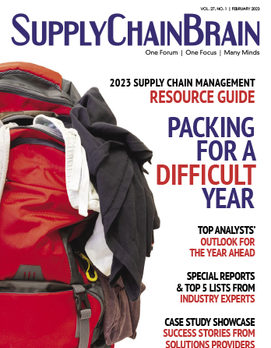
Home » Retailers – Quit Bellyaching and Differentiate Yourself on Returns
SCB FEATURE
Retailers – Quit Bellyaching and Differentiate Yourself on Returns

Photo: iStock.com/Liubomyr Vorona
February 2, 2023
Depending on which statistics you follow, consumers return something like a fifth of all purchases these days. As we pull out of peak shopping period, that means we’re firmly in returns season.
Whether these are items bought at brick-and-mortar stores or online, they end up in consumers’ homes, and need to find their way back into the supply chain – not just at minimal initial cost, but also in a way most likely to generate repeat sales. Or, to be more realistic, in a way that minimizes lost future sales. Because returning items remains one of the more dismal parts of shopping.
Retailers need to get focused on getting it right, says Dennis Moon, chief operating officer of Atlanta-based Roadie, a provider of same-day, last-mile returns management and reverse logistics, and now a subsidiary of UPS. He’s intrigued by how little attention was given to improving the returns process until recently. “The biggest surprise is that this hasn’t come up earlier,” he comments. “Everyone has been so focused on getting things to people fast and free. I’m surprised this is only catching fire right now.”
“Returns are really bubbling up to the surface as a topic in every conversation we have,” he says. “There’s huge growth potential both for our industry and the retail industry.
“The differentiator from a consumer standpoint is not just how you get product to me — how fast, what day of the week — but if I need to return it," says Moon. "What’s that process like? Retailers are trying to differentiate themselves.”
Investing in a returns strategy is so important, Moon says, because research suggests that retailers without an effective returns strategy risk losing not only revenue but also customers. Smarter returns management, he argues, yields happier customers, is more likely to result in an exchange rather than a return, and helps retailers get inventory back into circulation faster.
His advice is to make easy returns a selling point. For example, retailers can provide the same transparency to returns as to initial purchases, with customers able to track their returns. He also suggests creating a dedicated intake team and streamlined processes. And, of course, retailers that aren't large enough to pour resources into this should take advantage of the latest technology. “You don’t have to be a mega-retailer to offer customers quick and easy returns,” says Moon.
An increasing trend he observes is retailers offering to pick up returns from customers' homes or offices. Free shipping on returns is one thing, but you still have to pack the item up, affix a label and take it to the nearest shipping point. What if you didn't have to bother with all that? “We like to see improvement on timelines from a returns standpoint. It’s similar to getting something delivered next day.”
Fast returns can be a win-win for both seller and buyer. “From a retailer standpoint, they want to re-stock ASAP," Moon says. "And the customer wants to be credited ASAP. So tighter returns timelines are coming, with the item back on the retailer’s shelf within a matter of days.”
Retailers tend to bellyache about the increased rate of returns on e-commerce purchases, but Moon has a couple of counter-points. First off, retailers save money when they fulfill orders direct from warehouses rather than distributing product to stores, where it sits for weeks or months. Some of that saving should go into a better returns process, he says. Second, when a retailer complains that consumers making online purchases of clothing or shoes, say, tend to “bracket” – buying multiple sizes or colors in order to choose and keep some and return the rest – those items would previously most likely have been sitting on the shelf at a store.
Then there’s the constant referencing of recent supply chain problems. “The supply chain dilemma has been used as a crutch since the pandemic,” Moon says. “Poor service can’t be blamed on supply chain issues forever. Retailers who have a really seamless returns process, ones that don’t bait and switch customers, ones that make it easy — those are the ones who win.”
Further, Moon says, no one seems very focused on exchanges, as opposed to returns. “Someone needs to solve the exchange problem as well as the return problem,” he says.
Just before the holiday season, USA Today reported that, of 300 retailers surveyed, 36% said they do not offer free shipping on returns — double the number that refused to cover those costs last year — according to Inmar Intelligence. Moon says this points to short-term thinking that’s likely to damage business. “The big question is: Does a return involve a loss of sale, or of a customer?” he says. “It doesn’t have to.”
RELATED CONTENT
RELATED VIDEOS
Subscribe to our Daily Newsletter!
Timely, incisive articles delivered directly to your inbox.
Popular Stories

2023 Supply Chain Management Resource Guide: Packing for a Difficult Year
VIEW THE LATEST ISSUECase Studies
-
JLL Finds Perfect Warehouse Location, Leading to $15M Grant for Startup
-
Robots Speed Fulfillment to Help Apparel Company Scale for Growth
-
New Revenue for Cloud-Based TMS that Embeds Orderful’s Modern EDI Platform
-
Convenience Store Client Maximizes Profit and Improves Customer Service
-
A Digitally Native Footwear Brand Finds Rapid Fulfillment



